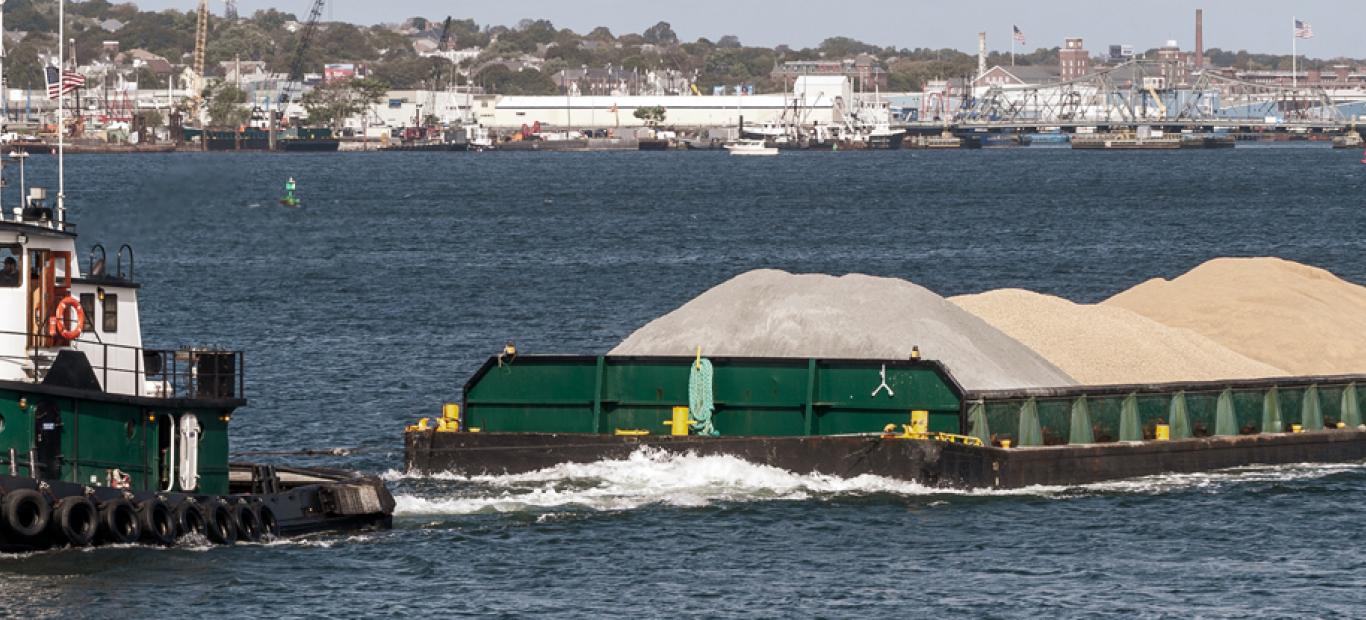Jumbo Barges, Vulnerable to Loss

Sumber : https://www.flickr.com/
In the previous article, the author discussed how to calculate the tug traction and barge loads to achieve seaworthiness in towing operations. Through this article, we will not discuss these calculations, because it is very confusing for all of us, but instead we want to review an interesting fact related to existing towing operations.
A big question arises, why do we need to understand how towing is calculated? What actually happens in the towing operations that are currently being run in Indonesian waters?
Based on the Facultative IndonesiaRe data claims reported in the last 5 years (2015 - 2019), 42% of ship hull insurance claims come from barges. A percentage that dominates the loss incidents of other ship types in Indonesia. Barge is a ship that cannot move alone (non self propelled vessel). We are certainly curious and need to know more about the barge specifications that make such a huge claim.
Identified by size, barge that has a size of 3000 GT and above has a high probability of loss. Loss originating from barges with the size of 3000 GT and above is 62% of the total loss bars in the last 5 years in an amount above IDR 300 billion. Wow! The incidence of claims on barge size 3000 GT and above or often called jumbo barges, that apparently does not take into age account. Young or old, jumbo barges have high probability of an accident/ loss. As much as 67% of the loss came from jumbo barge is aged under 10 years and 32% of the loss originated from jumbo barges aged 11 to 20 years.
Claims that occur are not dominated by total loss claims or constructive total loss, but rather come from partial loss claims. These claims have many causes. The majority, as we all know, are claims caused by the ship experiencing grounded (42%), stranded (23%) and collision (7%) while sailing. Why is the barge so easy to ground, strand and experience collision?
Most of the jumbo barges are grounded and stranded due to bad weather (waves over 4 m, strong winds and strong currents) which cause the barge to drift and the towing rope is forced to be cut by the crew, and bad weather makes the anchor chain break when barge lego anchors. Sometimes due to negligence of the ship's crew in checking the weather and damage to the hook tow tug when pulling the barge, is the cause of the barge being grounded and stranded. The next big question is did bad weather really happen? If it is true that bad weather occurs, it means that it can be concluded that the jumbo barges can no longer be controlled by the tug, disregarding the power tug suitability considerations. Barge collisions usually occurs due to bad weather, which causes the towing rope to be cut and cause contact with other vessels while berthing, or usually a collision occurs due to avoiding tides and crew negligence in observing shipping lanes, especially in rivers.
Surely we are also curious where the jumbo barges incident experience a loss? Jumbo barge ships often crash on the Barito and Mahakam rivers that is caused by the narrow river width and heavy shipping traffic. For stranded and grounded vessels, frequency and severity often occur in Kangean Island, Pacitan, Cilacap, Bengkulu, Masalembu, Java Sea, Bayah, Bangka Belitung Waters, Makassar Strait, Palembang Waters (Musi River), Taboneo, and North Maluku waters. The incident of barge ship is almost evenly occurs throughout Indonesian waters.
So, does the jumbo barge no longer be controlled by a tug? Is it because the barges are too big and most of the power tugs in Indonesia are not suitable? This is what we need to know. If the answer is that there is no suitable tug to attract the jumbo barges, the result will be even more claims in the future. The insufficient power of the tug engine is one of the factors that causes the jumbo barge to be uncontrollable and in the end it is easy to lose. In addition to the characteristics, jumbo barges have a large size and resistance and is difficult to control. However, the probability of loss events, caused by the size and resistance of the jumbo barge, can be minimized if we pay attention to the feasibility of the towing operation.
Based on the data above, it really illustrates that the jumbo barge is very susceptible to loss regardless of age. What happens is inseparable from how the proper operation of the towing operating system is carried out, by taking into account the size of the tug power, the feasibility of the towing line, and the ability of the crew to anticipate weather conditions and shipping in Indonesian waters, which highly influences the loss of barge ships. Here is so that underwriters here are not fooled by age in this case the age of the jumbo barge. Many underwriters consider young age to have a small probability loss, this assumption does not apply to jumbo barge, in fact in the case of jumbo barge, young people also have a high probability of loss. It should be noted that each type of ship has different loss patterns.
Author





 9205
9205



 02 Nov 2023
02 Nov 2023 9633 kali
9633 kali









